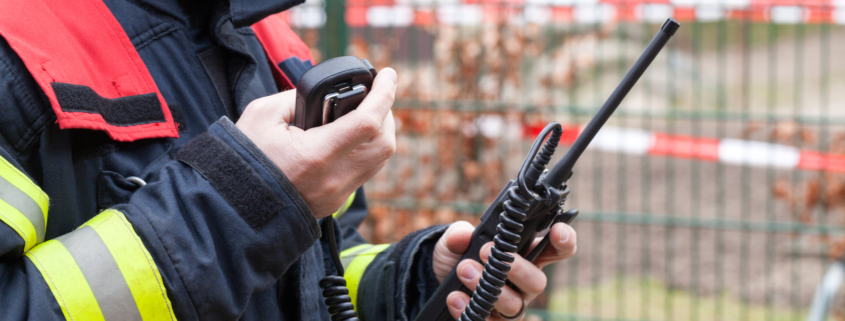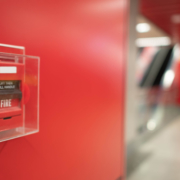What is ERRCS/DAS, and how does it work?
ERRCS don’t have to irk you! VFS Fire & Security Service’s Director of Fire Alarm Operations, Kevin Gregory, joins us to explain the importance of updating your alarm and communication systems.
What Are ERRCS and DAS?
ERRCS stands for Emergency Responder Radio Communication Systems, also known as Bi-Directional Antenna Systems, or DAS.
The ERRCS and DAS are very similar; both systems are used within commercial and residential buildings to allow emergency responders to communicate with each other via two-way radio in areas that they may not have been able to in the past.
As an amplification system, ERRCS amplifies the radio signals between first responders’ radios during an emergency.
Why Did ERRCS Systems Become So Important?
During the September 11th attacks in New York City, emergency responders experienced difficulty communicating with each other in rescue and recovery efforts. These difficulties included full radio communication failures, which made the first responders inside buildings lose contact with dispatch and fire crews outside, risking the lives of the first responders and hindering their rescue efforts.
The communication failures on 9/11 spiked awareness for high-functioning ERRCS/DAS, highlighting the need for tools that would allow responders to communicate without interruption or signal loss in the event of an emergency. Since 9/11, ERRCS and DAS have become a critical priority for commercial building owners.
What Are the Requirements of an ERRCS System?
While the requirements for ERRCS used to apply only to buildings within the specific guidelines–any building over three stories or with underground parking–requirements can now apply to most new buildings or projects.
The building department and/or fire department can enter a new building project, regardless of its size, and review the ERRCS. In this review, the building department may test for signal strength and require that an additional amplifier be installed.
How Many Systems Are Required in Commercial Buildings?
Typically, buildings require one system. However, several factors can affect the number of systems required in a space, such as the building’s size and layout. These factors may suggest additional amplifiers or other components need to be installed. For more information, learn the five things CRE owners should know about installing ERRCS, here.
To determine the number of antennas required in your building, an inspection team may utilize heat maps and sweep tests.
What is a Heat Map?
A heat map is generated through a sweep test or a 20 grid test. In a sweep test, an inspection team will divide the building into 20 sections and test each section with a spectrum analyzer and either a fireman’s radio handset or a signal generator.
The team will then run the results through software to create a report and a heatmap. This report will display the areas of the building which need better coverage as well as the locations in which the signal is strong.

Do ERRCS Need Testing and Inspection?
ERRC systems need to be tested regularly. The fire department requires that these systems are inspected and tested on an annual basis.
How is an ERRCS Inspection Conducted?
An inspection team will conduct an inspection process similar to the 20 grid test in which they will divide and sweep the building to locate areas of poor coverage. Their reports will be forwarded to the building department and fire department for approval.
Inspections are Essential in Maintaining ERRCS/DAS
Inspections and maintenance are critical to the safety of your building. At VFS Fire and Security Services, we specialize in installing and inspecting ERRCS. There’s an ongoing need and requirement for testing and inspection on an annual basis to ensure that the integrity of the system is still operational with NFPA updates and requirements.
What are LEED Buildings and How Do They Affect ERRCS?
LEED (Leadership in Energy and Environmental Design) is a third-party green building certification program that focuses on efficiency in designs. For instance, LEED buildings can have innovative windows made from low-E glass which stops outside weather conditions from affecting the interior temperature of the building and more efficient insulation.
However, low-E glass can cause low signal attenuation that impacts ERRCS. Most commonly, E-glass alters the requirements for your ERRCS in regard to needing additional amplification systems throughout the building.
Can Other External Factors Affect ERRCS?
ERRC systems can be affected by an array of outside forces. For instance, the signal can be impacted by the construction of neighboring buildings as well as construction supplies and choices. These external factors should be considered in the installation, inspection, and maintenance of a building’s ERRCS.
Read more about your inspection and maintenance schedule in our blog It’s time to get it together and inspect your building more than once a year!













